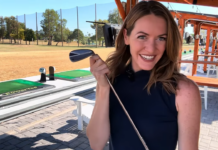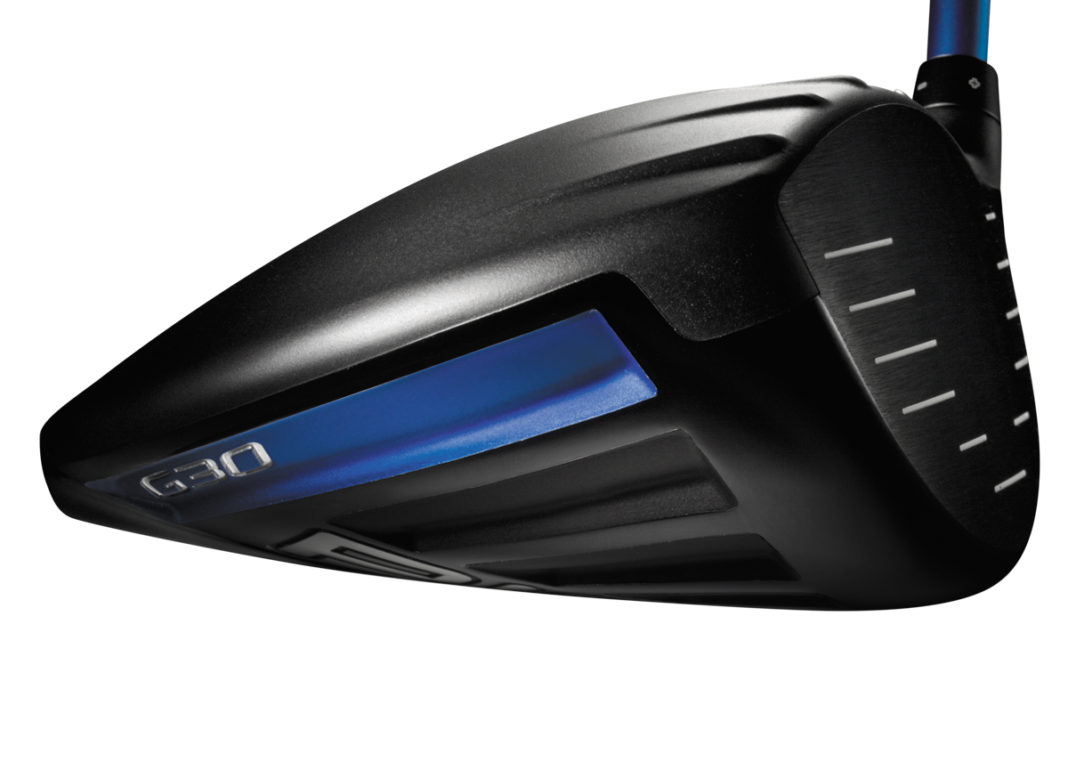We started the fitting with Nick’s own Titleist 905T which is 45 ¼” with a Graphite Design YS6+ Stiff. After a few swings, his average ball speed was 164.4 MPH with a 14.2 degree launch angle and 3470 RPMs of spin. This resulted in a very high ball flight with an apex of 59 yards and a descent angle of 50. His carry distance was 288 and total distance was 305 yards. Not too shabby. I think most of us would take that carry distance number and be happy.
In the case of this particular player, there are several areas we could improve on. For his ball speed, the launch and spin combination is too high. We would either need to get the launch angle and spin rate down respectively, or get the spin down a lot. With a higher ball speed player, getting the spin rate under control is the most important factor. By doing so, we could increase carry and reduce his overall height and descent angle. In theory, this would all add up to more distance.
We started Nick with a Ping G30, 9 degree (standard setting) and a stock stiff shaft. There were immediate results, as you can see from his numbers. The club head speed and ball speed both went up significantly. As a result, Nick is now a huge fan of turbulators. The launch angle remained largely unchanged but the spin rate was reduced to about 2900 RPMs. Not a bad start.
To further reduce spin, we kept everything else the same and adjusted the loft down to 8 degrees. Again, we saw a noticeable change in the numbers. While club head speed and ball speed stayed pretty much the same, the spin rate did decrease again. Now we had him down from 3470 to 2600, or a decrease of almost 900 RPMs. As a result of the increased ball speed and decreased spin his carry distance was now up to 322. Completely unfair, really!
The last change we made was to go shorter and stiffer with the shaft. We used an Aldila Tour Green 65-X in the G30 head set to 8 degrees. The shaft was 44 ½”. Short by today’s standards. First, note the change in club head speed and ball speed as a result of the 1 ¼” shorter shaft. The 4 MPH decrease in ball speed is a rational sacrifice for the increase in face contact consistency and dispersion. The benefit was the decrease in spin, yet again. While the launch angle stayed consistent throughout the fitting, the overall decrease in spin of almost 1400 RPMs resulted in huge gains. The overall carry went from 288 to 331 yards. Also, as a result of the decrease in peak height and descent angle, the total jumped to 359 yards on average. Lastly, if you look at the overall dispersion, you will notice that the average miss was only 3 yards off line with the final driver. Certainly an added benefit of upgrading to a high Moment Of Inertia, 460 cc driver head.
Needless to say, Nick has decided that it’s time for an upgrade and I’ve decided that I can never play golf with Nick again.











